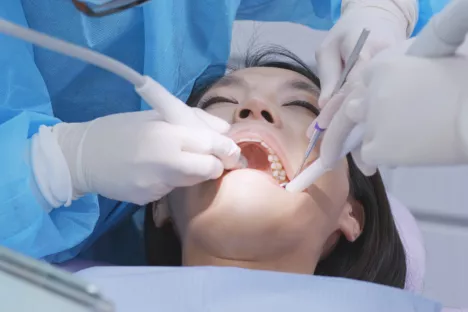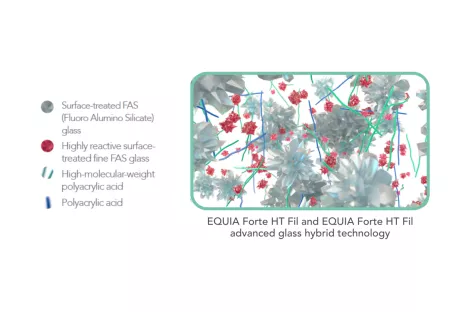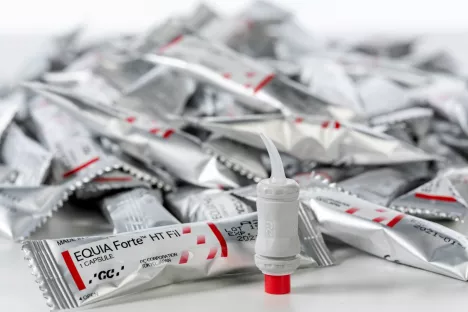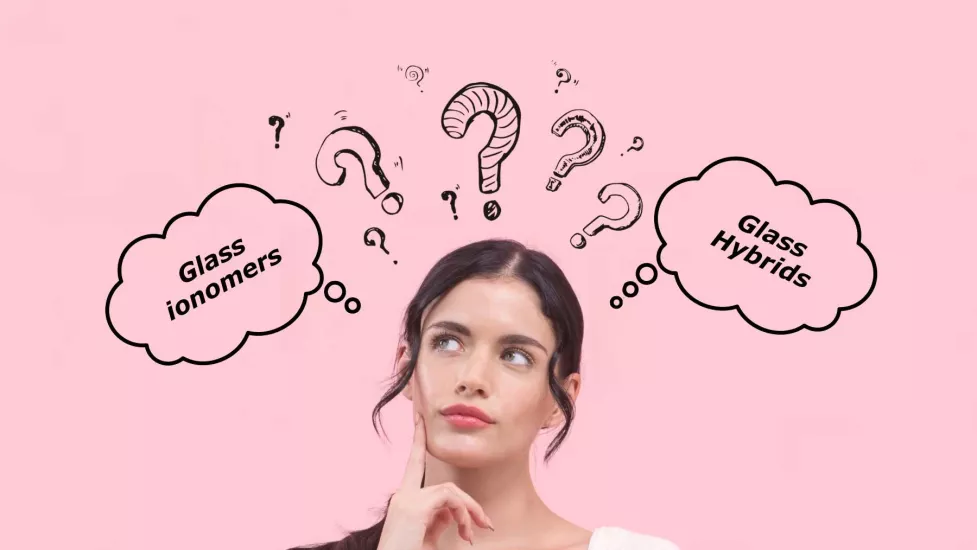Embracing the Future of Dental Care: The Next Generation of Glass Ionomer Restoratives
04/26/2023
Author: Dr. Rosa Ria Halili-Suguitan
In my teens I had aspired to become a Professional Teacher – an Early Childhood Educator was my dream. However, at that time, I had not realized how deficient the education system was in the Philippines where we had the shortest duration of formal schooling in the world. Fortunately, this was improved when the K-12 schooling was implemented in 2012. The K-12 in the Philippines has three levels: 1. Primary School (K to 6); 2. Junior High School (7 to 10); and 3. Senior High School (11 to 12). Thereafter, students can pursue Higher Education that includes bachelor’s degree, Master’s Degree, Doctor of Medicine, Juris Doctor, and PhD.
So, it was quite a surprise for me that I ended up studying Dentistry. I vividly remember one month before the semester started, I was cramming to complete my application for the Dental School and then five years later, despite many ups and downs, I had the greatest experience finishing my Degree in Dental Medicine and was eager to pass the licensure exam soon after graduation so I could practice my profession.
Fast forward to 2015, I was presented with an exciting opportunity to be part of the academe – not as a preschool teacher but in my own alma mater teaching Dentistry students. I enjoyed sharing my knowledge as part of the Operative/Restorative Dentistry department of the dental infirmary but recognized some significant limitations for the dentists in training given the major focus on amalgam restorations and the cavity preparations required for their retention. Keep in mind this was pre the changes in Dentistry course curriculum introduced in 2018 and student clinicians had to finish more than 40 posterior amalgam restorations as part of criteria for their graduation. Yet there was minimal training or completion requirements for other posterior restorative options using more minimally invasive tooth preparations and adhesive restorative materials like composite and glass ionomer cement. My unfortunate conclusion from this teaching experience in 2015 was that newly licensed dentists graduating at that time had insufficient knowledge of the current trends in dental materials that could be utilized to meet the needs of patients presenting to the dental office.

Dental materials has always been an essential subject in the dental school although I genuinely believe we didn’t spend enough time learning about glass ionomer cements. They perhaps were not as exciting tooth-colored restorations as composite resins but as we learn more about their evolution into Glass Hybrid materials and the supporting clinical performance its clear we should have given them more attention. What we probably remember about Glass Ionomer Cements was its indication as the material of choice for pediatric patients (for deciduous dentition) and as a temporary filling material. We didn’t really consider it a long-term restorative and it wasn’t really the first thing I would pull out of the drawer when I was doing a posterior restoration. I didn’t have the confidence with GICs and the vast “noise” in the market was about which type of composite you should use and what technique… which matrix, how many increments, “c” factor, “v” factor, how should I cure, which adhesive, etc. Certainly, no bandwidth for glass ionomer cements!
It wasn’t until I started reading journals and scientific articles discussing the benefits of glass ionomer cements that I could see it was a useful option and sometimes even the best option in certain clinical situations. The biggest strength is its capability as an adhesive. We tend to think of glass ionomer cement as a fluoride releasing restorative material, but we should also view it as a water-based adhesive that is ideally suited for bonding in our humid oral environment where it creates a remarkably strong and durable chemically fused seal. As a class of adhesive, when compared to different types of etch and self-etch resin bonds, GIC still sits as the best performing adhesive system based in clinical trial performance in non-carious cervical lesions.
From my learnings I could see priority indications for glass ionomer cements: As a liner where it replaces calcium hydroxide (except on exposed pulps) and other similar base materials under class I and II composite restorations. It is considered as an alternative sealing material replacing mineral trioxide aggregate (MTA) due to less crown discoloration. GIC is used as perio-restoration in root caries and endodontically, GIC is ideal for cementation of glass fiber posts with similar push out bond strength tests as self-adhesive resin cement.


When used to bond orthodontic brackets to tooth surfaces, it leads to significantly less white spot formation on enamel as compared with resin-based orthodontic adhesives. Another important application is its use as a fissure sealant in situations where drying of the tooth and moisture control are a challenge. This is particularly useful for patients with high-risk caries as, along with sealing the surfaces, it will also buffer pH and inhibit the growth of aciduric bacteria like s. mutans. We know that protecting occlusal fissures is especially important during the long eruption period of first and second permanent molars.
A recent consensus on caries management has identified that GIC used with an atraumatic restorative technique was more cost effective due to the clinical outcomes when compared to standard dental care. GIC was even advocated to be placed as a bulk material in the cavity, due to the minimal shrinkage and adhesive capabilities in a moist environment. However, the main limitation of GIC is its lower strength which limits the size of posterior cavity it can be used in.
We are fortunate there has been continuing research into these cements with a focus on increasing their strength and durability. With the development of glass hybrid materials, we now have a water-based adhesive cement that can be considered a long term alternative restorative material for posterior cavities. Glass Hybrids have overcome limitations around abrasion and erosion stability, and provide offer significantly improved flexural strength.[1] The development of Glass Hybrid was made possible because of the modifications in the chemical composition of the cement having introduced both a small and large reactive glass particles and introducing a high molecular weight polyacrylic acid to increase matrix strength. These advances in Glass Hybrid material class refute the notion of glass-based cements being merely a temporary material.[2] [3]
As evidence of this after 4 years in a multicenter split-mouth clinical trial researchers have reported Glass Hybrid (EQUIA Forte) has performed equally as well as a nanohybrid resin composite (Tetric EvoCeram) in moderate to large two-surface class II restorations.[4]
Even better for ease of use of Glass Ionomer and Glass Hybrid materials is the advent of capsulated delivery. Don’t you love it when there are unceasing innovations that makes our dentist life easier? We are taught that the correct mixing and ratios of the glass ionomer cement is critical in the success of the restoration. Capsulated forms give precision because of a uniformity in P/L ration and standardized method of mixing allows us to attain optimal mechanical properties of the material. On the side of the clinician, dispensing the material using the applier gives more control and direct application therefore, adaptation and speed of application will be better.
As dental professionals, it is important to continue learning and staying updated with the latest advancements in dental materials and technology to provide the best quality of care for our patients. It is also crucial to educate our patients on maintaining their oral health and making informed decisions about their dental treatment options.
[1] Schwendicke, F., “Amalgam: Gone for good?”, Dental Tribune, 2023.
[2] Gurgan S, Kutuk ZB, Ergin E, Oztas SS, Cakir FY. Clinical performance of a glass ionomer restorative system: a 6-year evaluation. Clin Oral Investig. 2017;21(7):2335-43.
[3] Sixty Month Follow up of a Glass Hybrid in NCCLs, Gurgan S,Koc U, Meral E, Ergin E. 2022. PER/IADR Oral Health Research Congress. J Dent Res Vol 101 (Spec Iss C): abstract number P319.
[4] 4 Years Clinical Performance of Glass Hybrid and Composite in Multi Center Trial, Miletic I, Baraba A, Basso M, Pulcini G, Peric T, Markovic D, Ozkaya C, Turkun S. 2022. PER/IADR Oral Health Research Congress. J Dent Res Vol 101 (Spec Iss C): abstract number P350.

